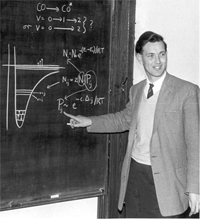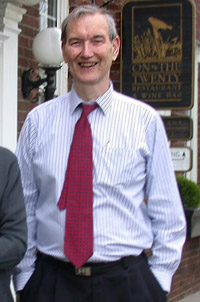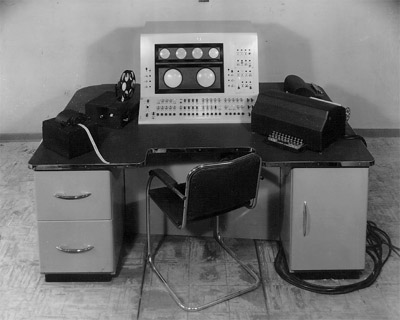



H.O. Pritchard in 1961 Photo courtesy and © H.O. Pritchard |
Huw Owen Pritchard was born in
Bangor,
North Wales, {note of this website: some good links here as given by
H.O. Pritchard himself:
link1,
link2,
link3}
in 1928.
He entered
Michael Polanyi's Chemistry Department
in Manchester
University in 1945, and completed his Ph. D. with H. A.
(Hank) Skinner in 1951.
The thesis topics were thermochemical measurements on various mercury
alkyls and a hand-calculation (with a mechanical calculator)
on a series of excited states of the hydrogen molecule-ion. In 1951, he was appointed by M. G. Evans as Assistant Lecturer in Chemistry, becoming Lecturer in 1954 and remaining in Manchester until 1965. During this time, he collaborated extensively with A. F. Trotman-Dickenson on experimental reaction kinetics, with Skinner on electronegativity theory, and he began to explore various aspects of computational chemistry with the newly-installed electronic digital computer Ferranti Mark1 in the Manchester University Computing Machine Laboratory. He moved, at its formation in 1965, to the Chemistry Department at York University in Toronto and continued to pursue both experimental and computational research until his retirement in 1997. The experimental work included conventional free-radical reaction kinetics, precision thermochemistry by calorimetry and by third-law methods, and measurements on explosions and spontaneous ignition, especially of hydrocarbon fuels in a diesel engine. Information also under http://www.chem.yorku.ca/profs/pritchard |
PublicationsA selection of quantum and computational references is as follows: ElectronegativityH. O. Pritchard,The determination of electron affinities. Chem. Reviews, 52, 529-563 (1953). H. A. Skinner and H. O. Pritchard, The measure of electronegativity. Trans. Faraday Soc., 49, 1254-1262 (1953). H. O. Pritchard and H. A. Skinner, The concept of electronegativity. Read it here. Chem. Reviews, 55, 745-786 (1955). {Note of this website: These 2 articles, especially the last one, were milestones in the development of this concept and were heavily quoted during the next 20 years.} H. O. Pritchard and F. H. Sumner, The application of electronic digital computers to molecular orbital problems. II. A new approximation for hetero-atom systems. Proc. Roy. Soc., London, A 235, 136-143 (1956). [ introduction of modern interpretation of electronegativity - H.O. Pritchard wrote { to this website, May 2003 } that there are especially 2 pages here he considers most important (PDF, 280KB) ] |

H.O. Pritchard in 2002 Photo courtesy and © H.O. Pritchard |
Early computational workH. O. Pritchard and F. H. Sumner,The application of electronic digital computers to molecular orbital problems. I. The calculation of bond lengths in aromatic hydrocarbons. Proc. Roy. Soc., London, A 226, 128-140 (1954). [ first molecular orbital calculation on an electronic digital computer ] H. O. Pritchard and F. H. Sumner, Steric hindrance in aromatic hydrocarbon systems. J. Chem. Soc., 1041 (1955). [ balance between π-orbital resonance energy and non-bonded repulsion ] H. O. Pritchard and F. H. Sumner, The calculation of bond lengths in naphthalene and anthracene. Trans. Faraday Soc., 51, 457-462 (1955). B. F. Gray and H. O. Pritchard, Dipole moments of diatomic molecules. J. Mol. Spectroscopy, 2, 137-143 (1958). [ explanation of overtone intensity greater than that of fundamental ] H. O. Pritchard and F. H. Sumner, Complete set expansions for molecular wave functions. J. Phys. Chem., 65, 641-645 (1961). |
 Ferranti Mark 1, around 1950 Photography and © from here. |
